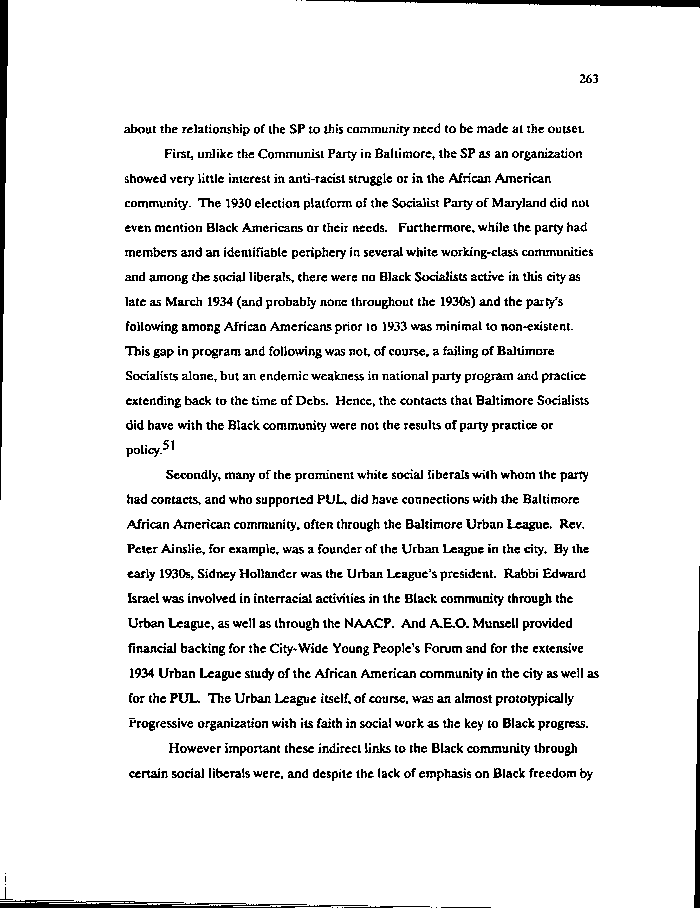|
263
about the relationship of the SP to this community need to be made at the outset.
First, unlike the Communist Party in Baltimore, the SP as an organization
showed very little interest in anti-racist struggle or in the African American
community. The 1930 election platform of the Socialist Party of Maryland did not
even mention Black Americans or their needs. Furthermore, while the party had
members and an identifiable periphery in several white working-class communities
and among the social liberals, there were no Black Socialists active in this city as
late as March 1934 (and probably none throughout the 1930s) and the party's
following among African Americans prior to 1933 was minimal to non-existent.
This gap in program and following was not, of course, a failing of Baltimore
Socialists alone, but an endemic weakness in national party program and practice
extending back to the time of Debs. Hence, the contacts that Baltimore Socialists
did have with the Black community were not the results of party practice or
policy. *
Secondly, many of the prominent white social liberals with whom the party
had contacts, and who supported PUL, did have connections with the Baltimore
African American community, often through the Baltimore Urban League. Rev.
Peter Ainslie, for example, was a founder of the Urban League in the city. By the
early 1930s, Sidney Hollander was the Urban League's president. Rabbi Edward
Israel was involved in interracial activities in the Black community through the
Urban League, as well as through the NAACP. And A.E.O. Munsell provided
financial backing for the City-Wide Young People's Forum and for the extensive
1934 Urban League study of the African American community in the city as well as
for the PUL. The Urban League itself, of course, was an almost prototypically
Progressive organization with its faith in social work as the key to Black progress.
However important these indirect links to the Black community through
certain social liberals were, and despite the lack of emphasis on Black freedom by
|

